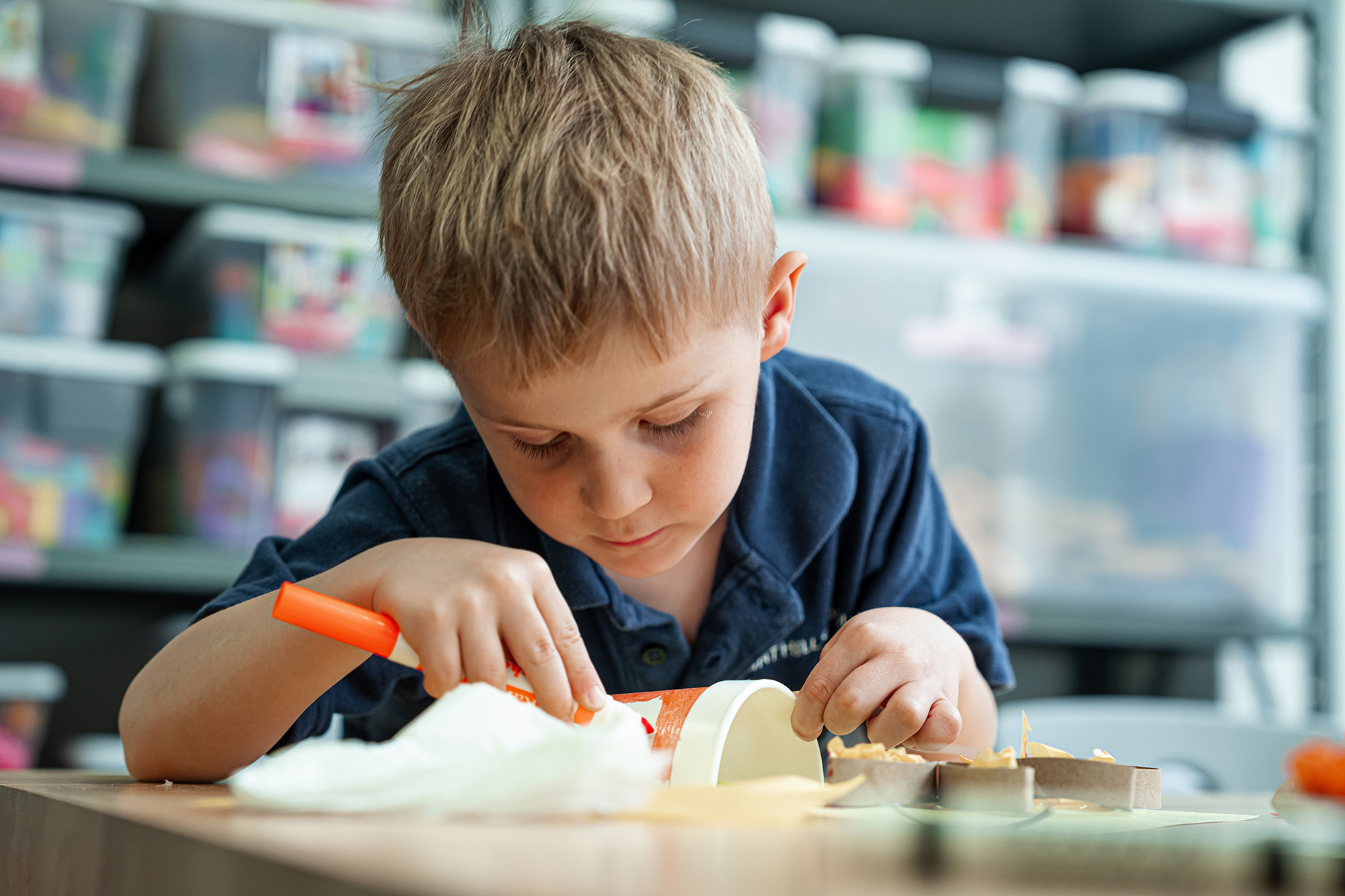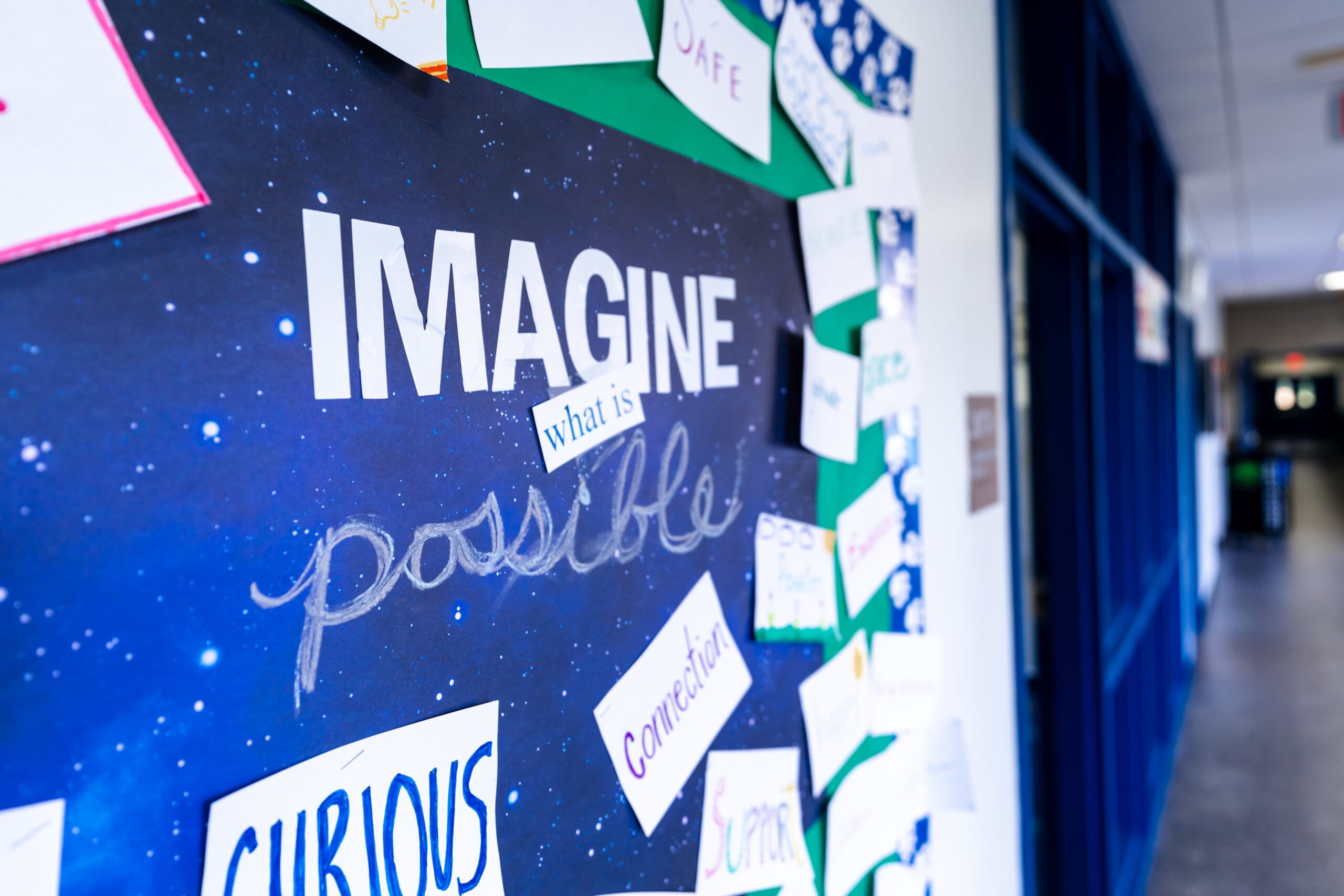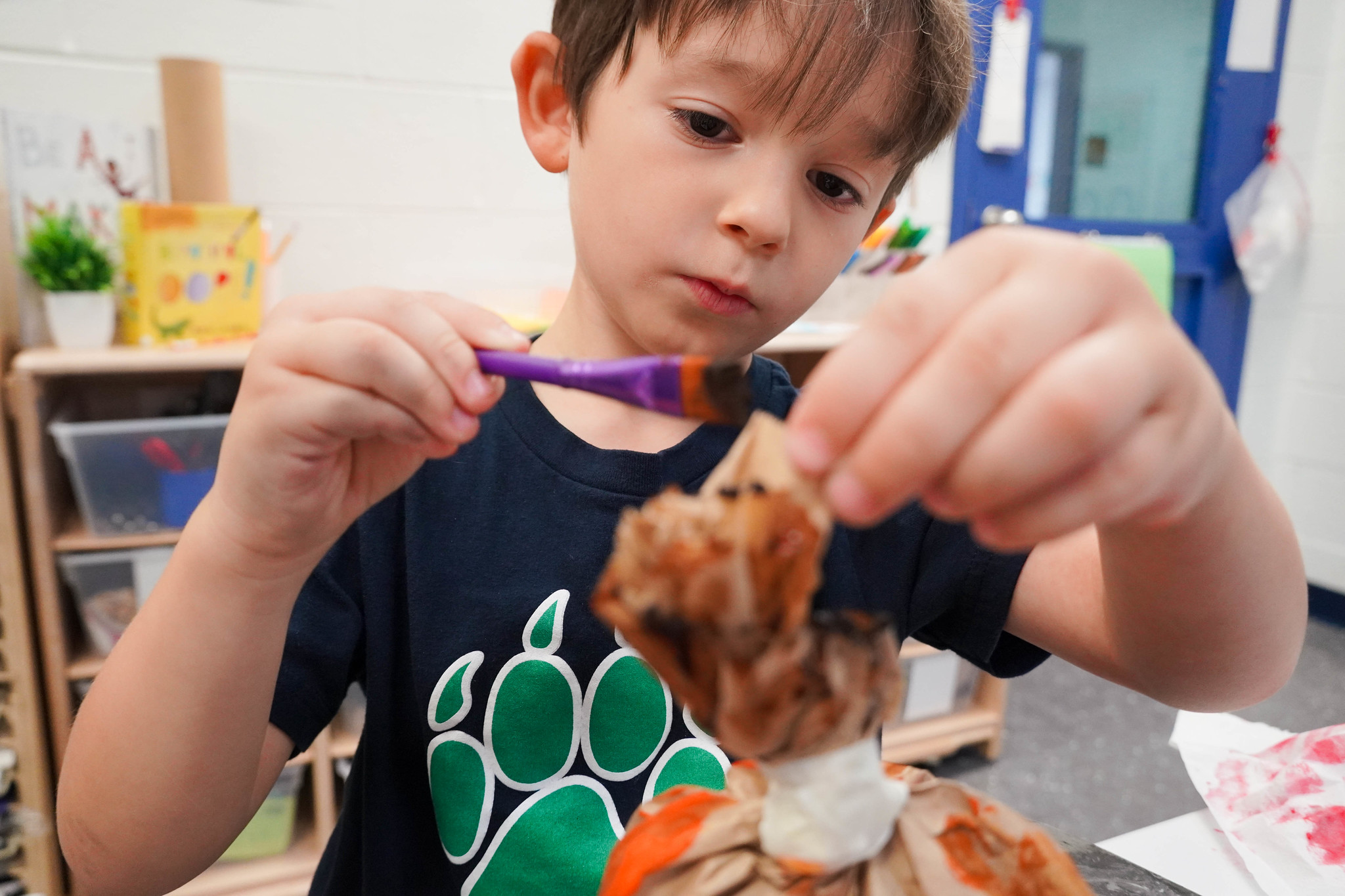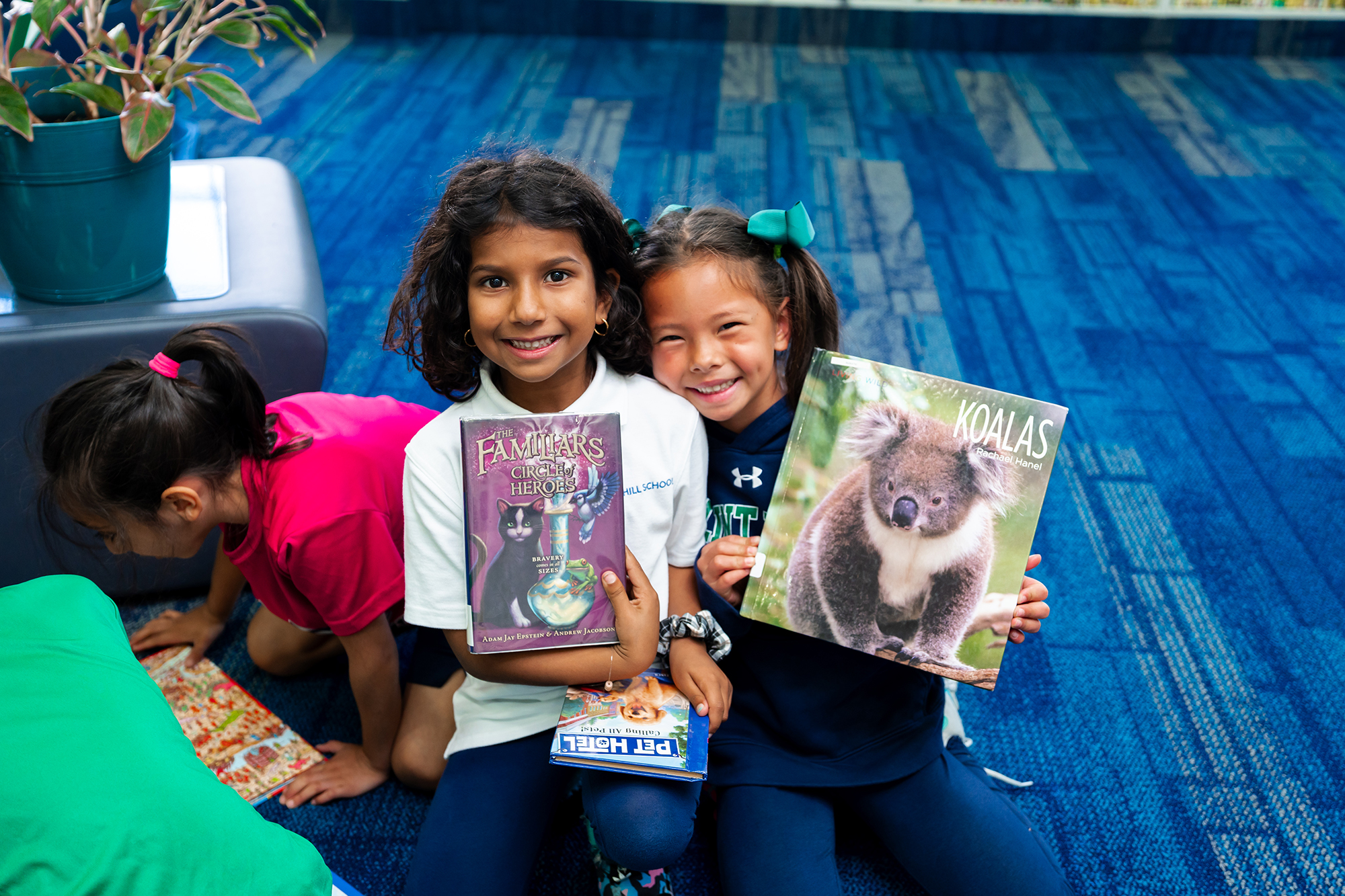LEARN MORE ABOUT FLINT HILL
HUSKY HIGHLIGHTS
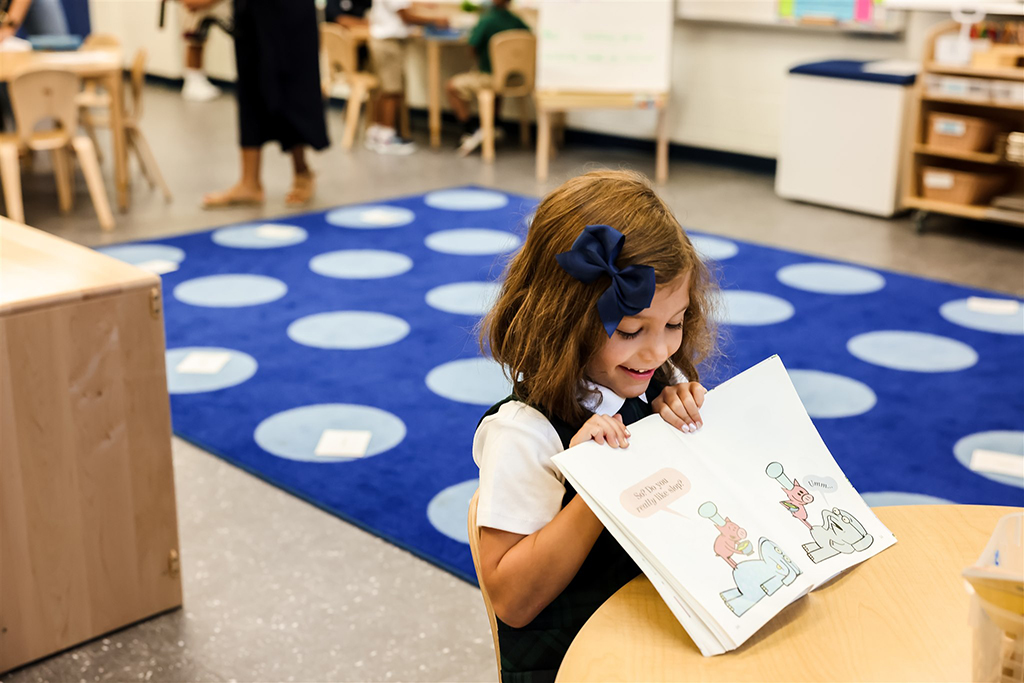
September 2, 2023
Written by Flint Hill Admission Team
What Is the ‘Science of Reading’?
There has been a recent buzz in the field of literacy around what is known as the “science of reading.” The science of reading is not a program or a tool. It is a body of research from academic fields such as education, neuroscience, psychology, linguistics, etc, that have invested decades of research to pinpoint precisely how children learn to read.
The science tells us that developing readers need to understand two key concepts:
- Decoding (how letters and sounds work together to form words) and
- Language comprehension (what those words mean)
When decoding and language comprehension work together, readers are able to attain the ultimate goal of reading comprehension.
As a human-made construct, decoding must be taught in a way that is both explicit and sequential. Consider the sound /ou/ and how it appears in each one of these words: four, house, group, cousin. Developing readers need to know the various sounds that /ou/ can make as well as have knowledge about the vocabulary in order to make sense of the word. A student may be able to use decoding skills to sound out a word (for example: “discount”). True comprehension emerges when they know the vocabulary word and can use it to make meaning in a sentence.
When did Flint Hill transition to this pedagogy?
The science of reading is not a new concept; still, there has been a very recent — and even urgent — push to adopt this pedagogy in many schools and districts around the United States and the world. Flint Hill’s Lower School, however, did not need to brace itself for quick and urgent change as so many other communities did. We had already blazed that trail by embracing the science of reading and evidenced-based reading practices years ago.
In 2017, teachers and administrators invested multiple days in professional training to adopt a specific scope and sequence for reading instruction and to learn how to integrate multisensory strategies that would help students develop skills in the five major areas of reading: phonemic awareness, phonics, vocabulary, fluency, and comprehension.
Second Grade Teacher Emma Barnes recalls the transition to using the science of reading: “There was definitely a missing piece before; we were focusing on reading and comprehension, but with the direct instruction like exploring vowel teams and spelling combinations, I see children making connections between the patterns and the text, and then verbalizing it. I also noticed an improvement in spelling and in their confidence in writing. They are using what they are learning. It’s almost like the pieces are being connected.”
Our teachers and students have benefited from practicing these researched, multisensory strategies in our classroom routines, making them engaging and fun in addition to being effective.
A predictable multisensory approach that engages and educates young readers
Our youngest students in Junior Kindergarten and Kindergarten spend time developing their phonological and phonemic awareness, letter knowledge and early decoding skills. During mid-Kindergarten through second grade, a predictable sequence of steps anchors the learning throughout the week. These multisensory steps target significant reading strands such as phonological awareness, word building, decoding and sentence reading, sound dictation and spelling.
It might be tempting to assume that such explicit, direct instruction is boring for young learners — but we’ve found that’s not the case.
“What we love is how much the junior kindergarteners love it; they cheer when it is time for literacy and they even ask for it. Throughout the year, there are a multitude of skills practiced weekly. It is all-inclusive with materials, pictures, and a multisensory, whole-body approach to support each learning style that we see represented in our classroom,” said Junior Kindergarten Teacher Julie Thomas.
When asked what kinds of language games are their favorite, Kindergarten students Wesley and Tanner described an innovation to Jenga: “So, you pick a card first and read the word. If it says ‘yellow’, you put the block that says ‘yellow’ at the top.”
Learning to read is foundational to our Portrait of a Flint Hill Student
When students become skilled readers, they develop a confidence that propels them to choose to read and to find joy in the process. Passionate, voracious reading not only unlocks the pursuit of content knowledge, it helps students make connections and predictions, solve problems and empathize with a wide variety of personalities and experiences as depicted in literature.
At Flint Hill, we strive for our students to be self-directed learners, problem solvers, effective communicators, ethical citizens, and leaders. With such a strong emphasis on becoming capable, confident readers, our students are well-positioned to embrace and embody these lifelong traits.
Christine Dwyer is the Lower School Language Arts Department Chair and a 6th grade teacher.
LEARN MORE ABOUT FLINT HILL
Fill out the form to receive updates from our team.
RECOMMENDED FOR YOU
Drawing directly from neuroscience research, Flint Hill's educational philosophy emphasizes the importance of thorough comprehension over hurried advancement.
A VAIS committee completed its 10-Year Accreditation Visit in April 2024. The committee reported its immediate findings in this short presentation to faculty and staff.
Kindergarteners embarked on a project that nurtured their artistic abilities and expanded their horizons to encompass cultural and linguistic dimensions.
Running out of books for your young reader? Lower School Librarian Michelle Plaut shares eight book recommendations for children in Grades JK-3 (ages 4-8).



